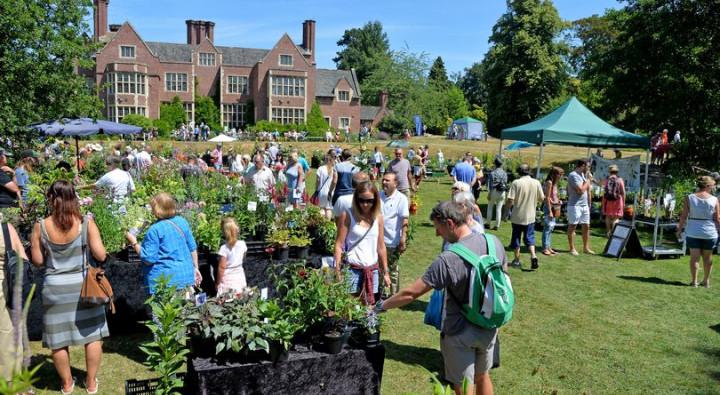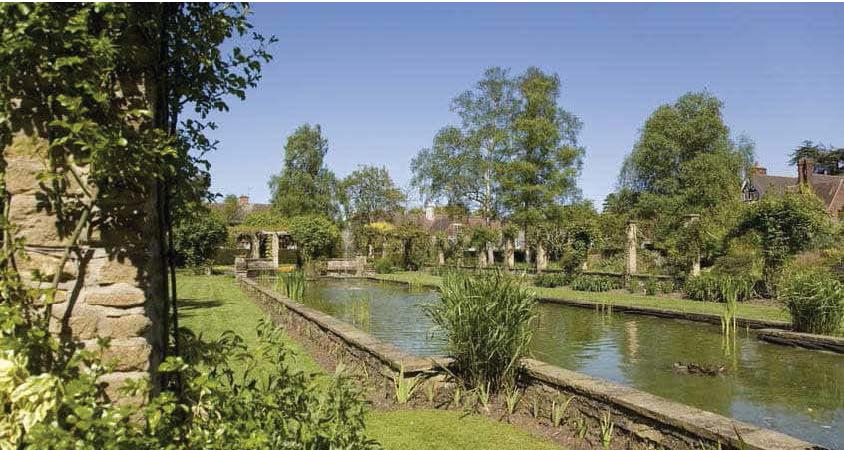Reimagining green spaces to support university public and civic engagement
John Regan reflects on the work he and his colleagues are pursuing with universities to transform their green spaces into new opportunities for engaging with communities, attracting funding, and delivering on critical institutional priorities.

Biodiversity, while a topic for academic study and research, is also part of the very fabric of a university and is increasingly integral to its institutional status with its community of partners and students. Green spaces that have, for many years, been seen chiefly as a maintenance burden are now being transformed into important assets where a university can demonstrate the restoration of nature, individuals and society and the organisation’s commitment to address the challenges of the Anthropocene.
It is striking however that a sufficiently creative re-imagining of on-campus natural capital can also open up a range of public engagement opportunities. Additionally, this can help communicate institutional uniqueness and ‘brand’, with green spaces being a powerful tool to promote a university’s civic identity and activities to key audiences.
What are ‘green spaces’?
The expression ‘green spaces’ can extend to a wide variety of areas: from botanic gardens; large natural or semi-natural tracts of land; utility lawns; or small areas of grass or planting adjacent to student residences or other buildings. Areas decommissioned from some former usage may also become available for nature restoration. Biodiversity gain across campuses can equally include tree cover or even the rendering of existing hard footprint into a more nature friendly state.
How can biodiversity support multiple university agenda?
My colleagues and I have been passionate about supporting institutions to make more of their green spaces and recently have started working with universities across the UK to reconceptualise the use and identity of their natural areas. This of course supports an institution’s overriding commitment to protecting biodiversity across its spaces, but it also has a significant impact on public engagement and interconnecting areas such as undergraduate recruitment, civic and community relations, staff and student wellbeing.
Although biodiversity science and wider areas of biology are the most obvious disciplinary candidates for engagement, green spaces can actually be used to champion many less obvious academic subjects, including the humanities and social sciences. Furthermore green spaces can also be capitalised on for multiple other linked organisational priorities, such as:
- Research
- Teaching
- Wide promotion of the university’ brand, values and identity
- Carbon capture and offset
- Innovation in terms of nature based solutions
- Internationalism
The development of new visions for relevant green holdings (and critically this should be in consultation with multiple stakeholders, both internal and external) also opens up new dialogues with various external potential funders. In the same way that green zones can be finessed to support priorities that are of critical interest to university leadership, plans for their delivery can also lead to the involvement of different kinds of funders including those in public engagement, STEM, heritage, local economic development, mental health, research, leisure and tourism, and many more.
Most significantly more and more funds are being made available for biodiversity gain itself, and projects extending to public access, interpretation, and engaging university science and other knowledge areas will be extra attractive to funders.
Transforming green spaces in practice
Working with University of Leicester Botanic Gardens
Our work with the University of Leicester Botanic Gardens has proven an exceptionally interesting project. This much loved area some three miles from the main campus possesses many wonderful characteristics, but has suffered a degree of decline over some years.
We have enjoyed working on a very broad range of interests, inside and outside of the University, to advise on developing the Gardens into an integral part of the university’s civic strategy and future. We have recommended that the Botanic Gardens moves away from acting as a purely collection-driven organisation to adopt a much broader role for University, City and region.
This can mean, for instance acting, as a ‘living laboratory’ for research, or a teaching and engagement space connected to a very wide range of the University’s disciplines, including the arts, humanities and social sciences. Equally, the site’s potential as a local and regional community asset can be expanded with a far greater reflection of all the groups who call Leicester - the UK’s first city with no ethnic group majority - their home. A more varied and resourced programme of events means that the Botanic Gardens could play a more active and holistic role in a student’s undergraduate experience. In the context of the twin climate and biodiversity crises, this green oasis can evolve into the University’s overall environmental hub ‘connecting the dots’ between all that nature means across such a complex and multi-faceted institution.
There are many more identities, all perfectly consistent with one another, which the buildings and gardens on site can support and assume. In each case, these can relate to the priorities of a contemporary HEI and fit with an attractive range of external funding potentials - whether focussed on nature gain, community benefit, research, engagement, good mental health and so forth.
Get in touch
Our team would be very interested to hear from further higher education institutions looking to strategise biodiversity gain and transform what may be purely functional green amenities into multivalued resources.
We have also been talking with the NCCPE to explore opportunities to scale up this kind of work and any joint potential for external funding support. We are considering running a roundtable on the topic later this year. Along with the NCCPE, the following national stakeholders have expressed their interest in this discussion to date:
- The Wolfson Foundation
- The National Lottery Heritage Fund
- The National Lottery Community Fund
- The RHS
- The Department of Education
- DEFRA
- Natural England
- Botanic Gardens Conservation International
Please do get in touch if you would like to contribute your experiences and ideas.
John Regan
John@johnreganassociates.com
Image / Video
Excepteur sint occaecat cupidatat non proident, sunt in culpa qui officia deserunt mollit anim id est laborum.


